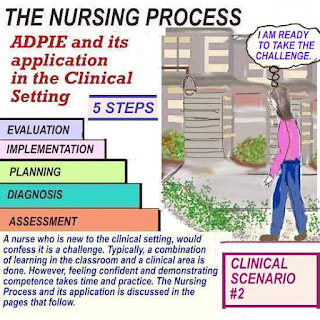UNDERSTANDING PANCREATITIS AND TURNER'S SIGN
Scenario:
Sara is describing the symptoms she had over the last
few days. These include abdominal pain, nausea, and
vomiting.
The nurse notes Sara's complaints and also does an
assessment. She noted that there was tenderness over
the abdomen.
assessment. She noted that there was tenderness over
the abdomen.
A CT scan and lab values are ordered by the doctor.
Lab values such as lipase and electrolytes may be
ordered for the patient with pancreatitis.
What is Turner's Sign?
Lab values such as lipase and electrolytes may be
ordered for the patient with pancreatitis.
What is Turner's Sign?
Turner's sign is an indication of acute pancreatitis.
It shows as a bruising around the flank.
Documentation should be done.
What is pancreatitis?
It shows as a bruising around the flank.
Documentation should be done.
What is pancreatitis?
Pancreatitis is defined as inflammation of the pancreas.
This condition may be acute or chronic. The Islets of
Langerhans, which produce insulin, are in the pancreas.
Insulin controls blood glucose.
How does pancreatitis develop?
This condition may be acute or chronic. The Islets of
Langerhans, which produce insulin, are in the pancreas.
Insulin controls blood glucose.
How does pancreatitis develop?
Pancreatitis may be caused by:
- Alcohol ingestion in excess
- Trauma
- Tumors
- Certain medications, and more
- Gallstones: blockage of the common bile duct
with gallstones from the gallbladder can cause
a back-flow of pancreatic enzymes.
Acute pancreatitis may very readily resolve in a
short period of time. IV therapy and antibiotics
are included in the treatment process.
- Alcohol ingestion in excess
- Trauma
- Tumors
- Certain medications, and more
- Gallstones: blockage of the common bile duct
with gallstones from the gallbladder can cause
a back-flow of pancreatic enzymes.
Acute pancreatitis may very readily resolve in a
short period of time. IV therapy and antibiotics
are included in the treatment process.
Cholecystectomy (removal of the gallbladder)
is sometimes done when pancreatitis is caused
by gallstones.
is sometimes done when pancreatitis is caused
by gallstones.
This
surgical procedure can be done laparoscopically.
This approach makes hospital stay shorter.
This approach makes hospital stay shorter.
Preparation for ERCP (Cholangiopancreatography)





Comments
Post a Comment